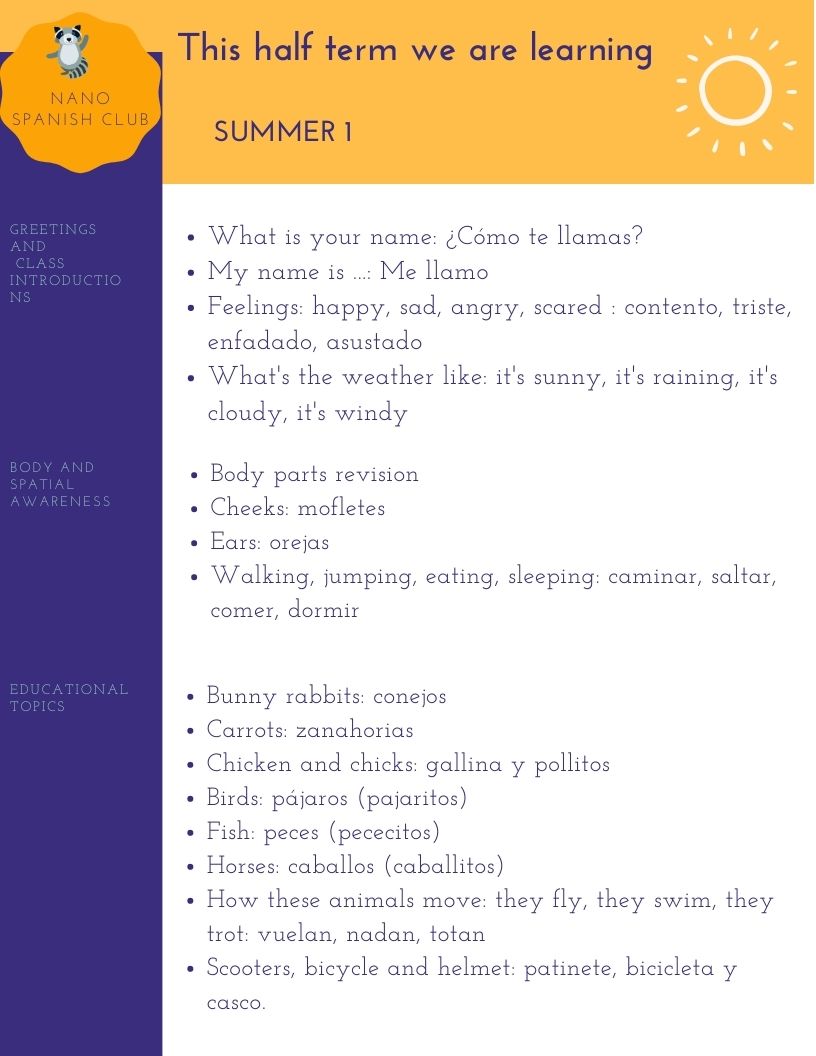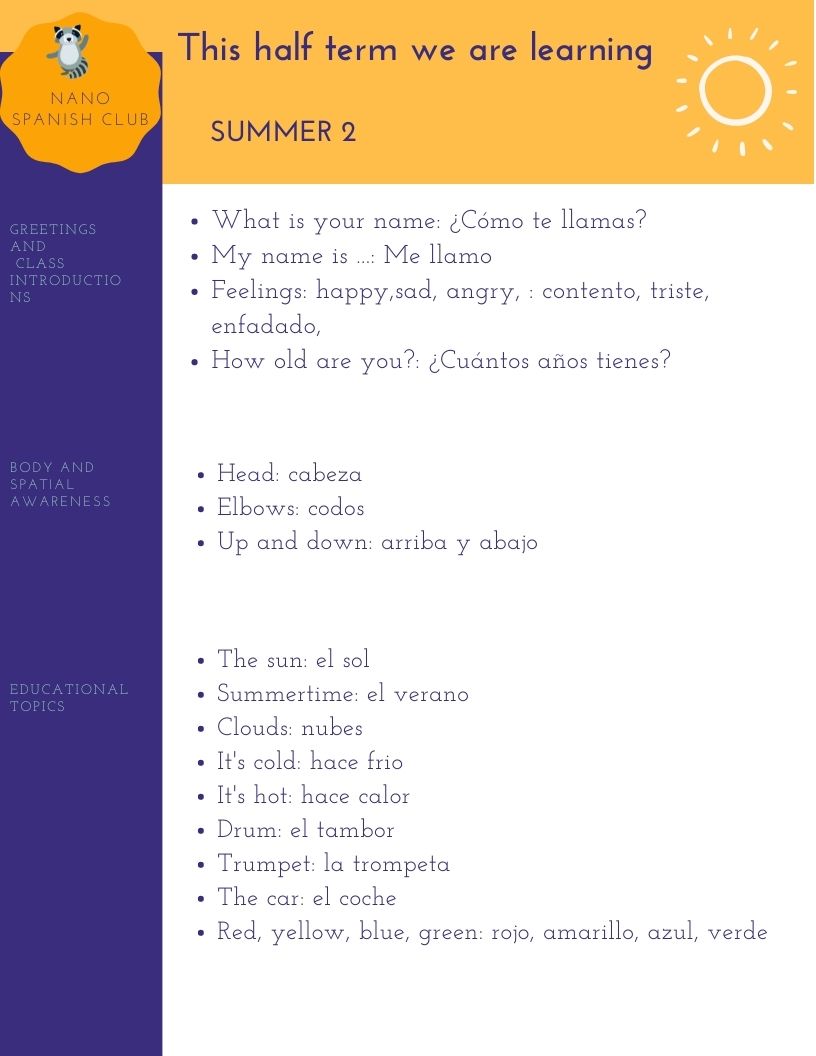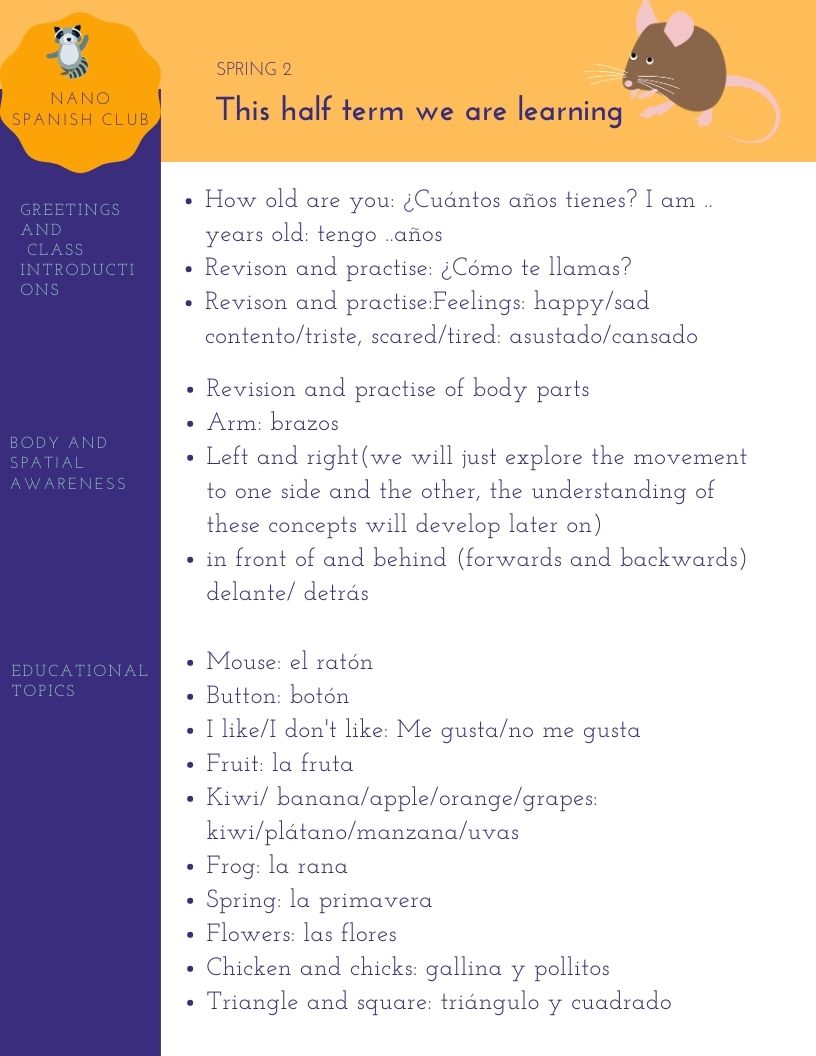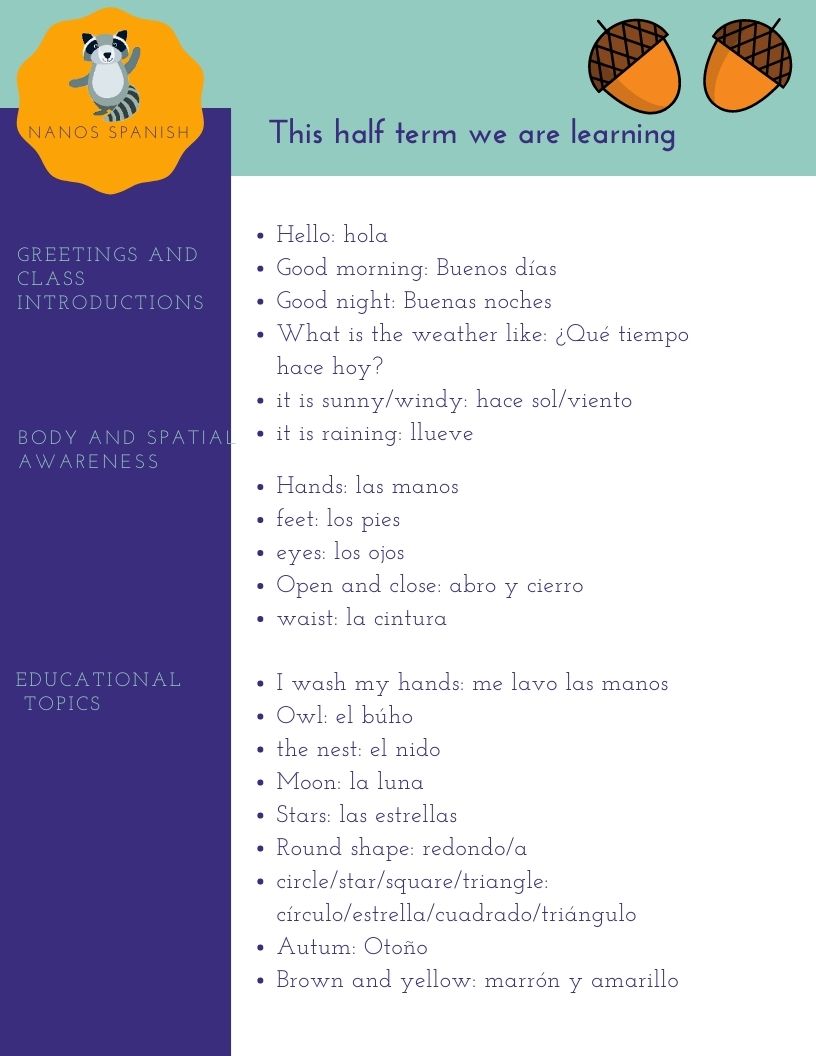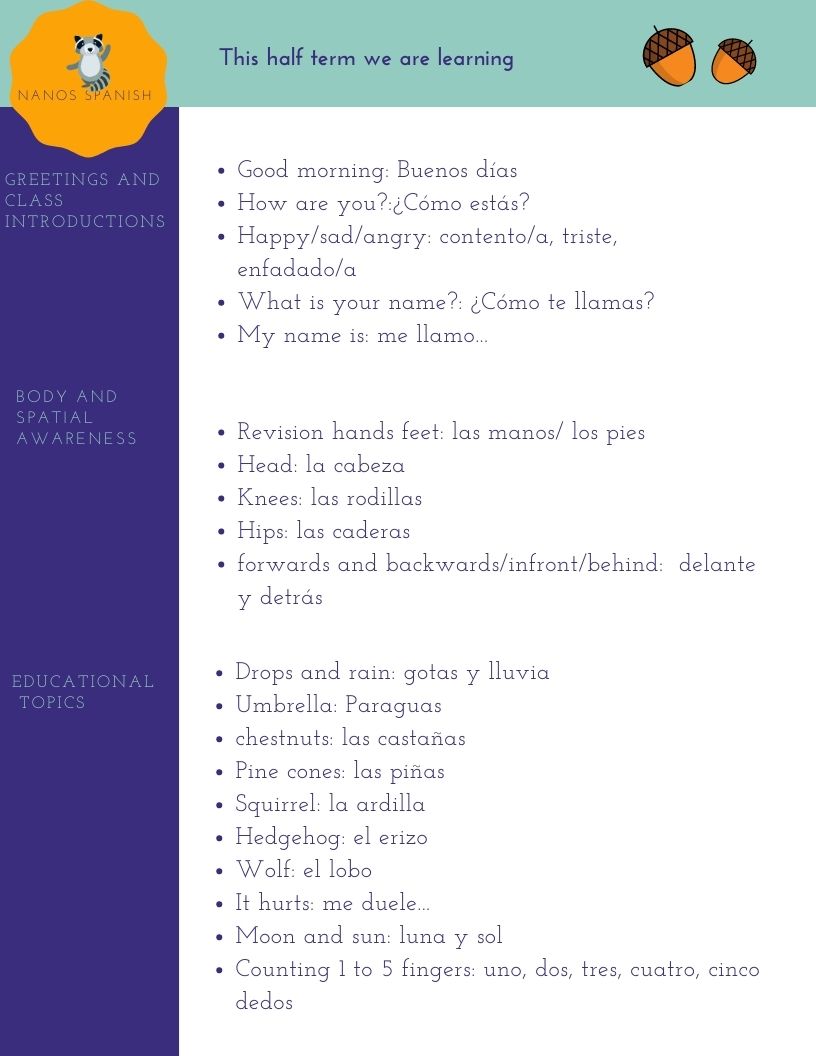..
..
Would you like to watch our counting video? uno, dos, tres...
![]() We value your privacy and would never spam you
We value your privacy and would never spam you
Summer term
Suggestions to keep the learning at home: Summer 1
Wake your children up with a 'good morning' 'buenos días' and say good night with 'buenas noches'
Play to ask their toys/dolls/figures 'what is your name?' ¿cómo te llamas? they can pretend to answer for them: me llamo...
Talk about the weather when you go out or looking out of the window.
Remember to point out the animals we are learning when you see them on a book or going outside. you can ask the children how is it called in Spanish: ¿Cómo se llama en español? (pointing to the animal) or ¿Cómo se dice bird en español?. You can also ask how do they move: ¿Cómo se mueven los peces?
If you are going out with your scooter you can ask where is the scooter/bike/helmet: ¿dónde está el patinete /la bici/ el casco? or ask them to put on their helmet: ponte el casco. You could use this too for all they need to put on - shoes, coat..- ponte los zapatos/abrigo.
Suggestions to keep the learning at home: Summer 2
Wake your children up with a 'good morning' 'buenos días' and say good night with 'buenas noches'
Play to ask their toys/dolls/figures 'what is your name?' ¿cómo te llamas? they can pretend to answer for them: me llamo...
Talk about the weather when you go out or looking out of the window.
Remember to point out the objects we are learning when you see them on a book or going outside. you can ask the children how is it called in Spanish: ¿Cómo se llama en español? (pointing to the object) or ¿Cómo se dice car en español?. Revise your colours saying what colours the car/bus/bicycle is
Spring term
Suggestions to keep the learning at home: Spring 1
Wake your children up with a 'good morning' 'buenos días' and say good night with 'buenas noches'
Play to ask their toys/dolls/figures 'what is your name?' ¿cómo te llamas? they can pretend to answer for them: me llamo...
Talk about the weather when you go out.
Sing the shoes and coat on song when you get ready to go out. Music is very powerful to build on a language intuition where you are using grammatical structures that will work for future learning and you can extrapolate to other contexts. in this case 'me pongo los zapatos/abrigo' you could also use it when you are getting ready for bed: 'me pongo el pijama' or getting dressed in the morning. Me pongo: I put on .. is a reflexive verb: ponerse to put on/wear and works differently than other verbs. By using it you are building on future uses of other reflexive verbs you will learn.
Find the colours we are learning around and remember them in Spanish
Suggestions to keep the learning at home: Spring 2
Wake your children up with a 'good morning' 'buenos días' and say good night with 'buenas noches'. After 12 pm you could explain that after lunch the afternoon starts and we should welcome it: 'buenas tardes' 'good afternoon'.
Play to ask their toys/dolls/figures 'what is your name?' ¿cómo te llamas? they can pretend to answer for them with toy voices: 'me llamo...' or you can be the toy/doll/figure 🙂
You can now also ask toys/dolls 'how old are you?' '¿cuántos años tienes?' using role play again, you or your child can answer: 'tengo (3) años'.
Talk about the weather when you go out.
Learning left from right is a confusing concept which requires repetition and patience. Always use their own body to demonstrate. Around 3 years of age children will have developed a dominant side: they will reach to things with one hand or the other, they will hold crayouns and toys mostly with the dominant side. You can ask the to cross their legs if unsure of which side it is, most probably they will pace the dominant side leg on top. Once you identify this side you can do game to name the side:' I'm going to tickle your right/left hand/ear/ leg'. 'lets move to right/left eye/arm/leg' The song La yenka is a very old song that can help learn the names and spaces/movements: left/right, infront/behind. You can also place toys in these positions to ask them where they are?
Spring is finally on it's way, can you look out for flowers -flores-on your walks outside. you can count flowers, talk about their colours: flores blancas, rojas ect..
Saying what you like and you don't like. Take all opportunities to ask your children: ¿te gustan los cereales/, ¿te gusta el zumo de naranja? or anything you can think of, help to anwswer: sí me gusta o no me gusta.
Autumn term
Suggestions to keep the learning at home: Autumn 1
Wake your children up with a 'good morning' 'buenos dias' and say good night with 'buenas noches'
Talk about the weather when you go out.
If you read any books featuring the moon, stars or owls say these words also in Spanish.
Find shapes around and remember them in Spanish
Use bath time to remember some body words we have learnt in class.
Suggestions to keep the learning at home: Autumn 2
Wake your children up with a 'good morning' 'buenos dias' and say good night with 'buenas noches'
Talk about the weather when you go out.
If you read any books featuring the squirrels, hedgehogs say these words also in Spanish.
Find shapes around and remember them in Spanish
Use bath time to remember some body words we have learnt in class.
If your child tells you something is hurting, say it also in Spanish (after dealing with the drama :))
Find here some useful blog posts to help out in your bilingual journey
-
5 great Spanish Books recommendations for Christmas December 1, 2021
-

-

-
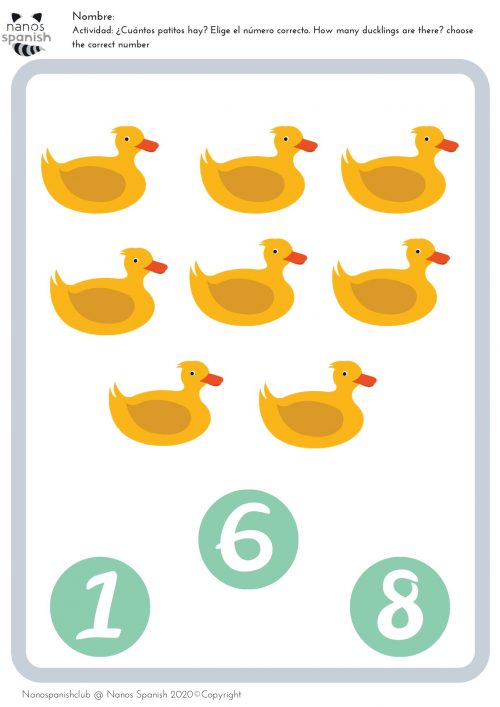 Print out Spanish activity bank and other resources. July 7, 2020
Print out Spanish activity bank and other resources. July 7, 2020 -
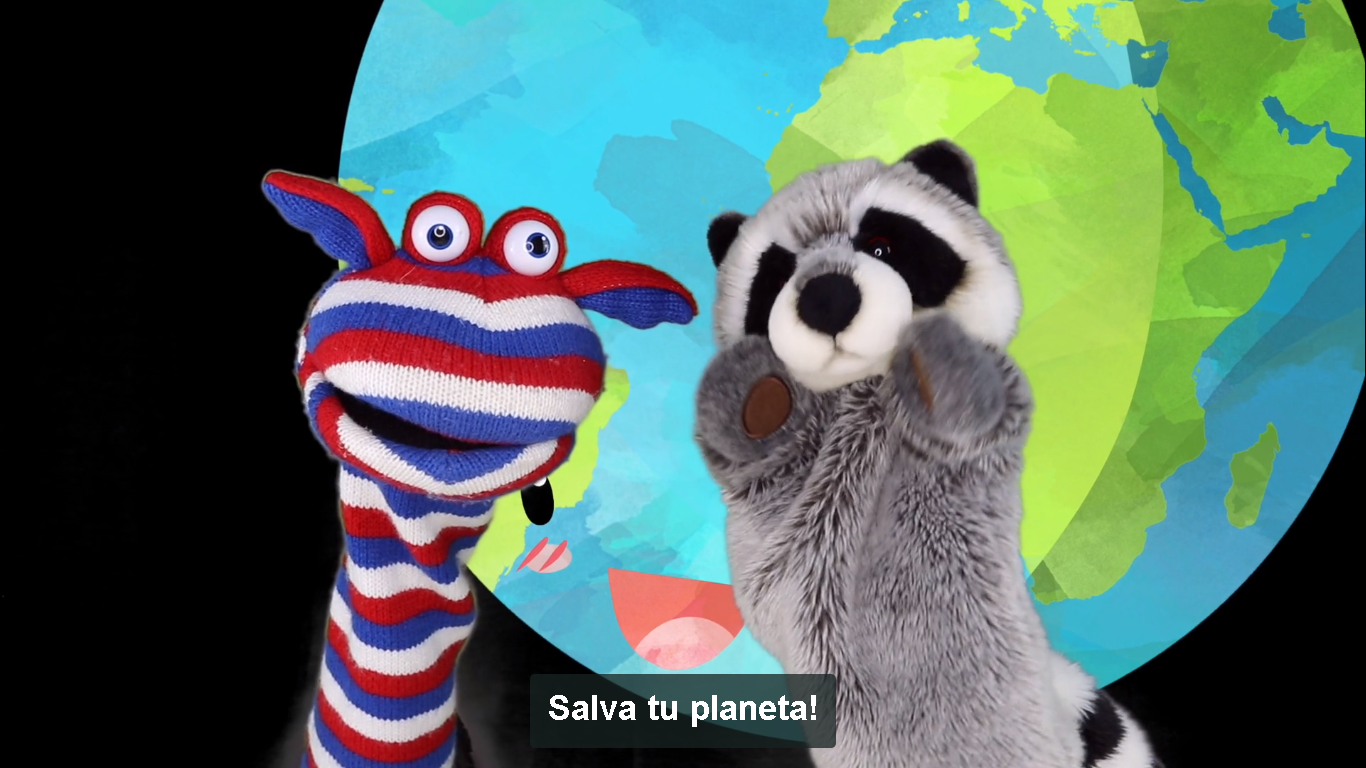 Harnessing the dizzying power of digital February 11, 2020
Harnessing the dizzying power of digital February 11, 2020

